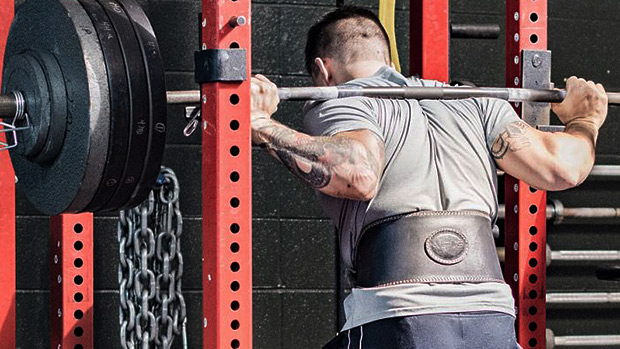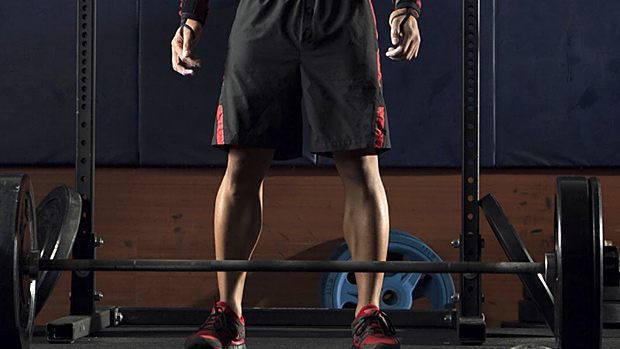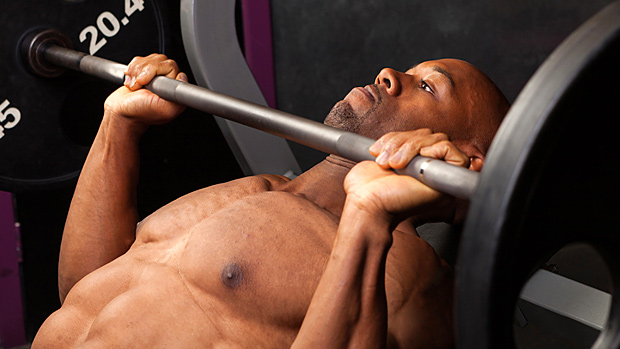No movement on earth builds more muscle and improves athletic performance better than the squat. But there's something else that makes the squat king.
When you push the human limits of the squat, you enter a realm that only a select few will ever know. It's a realm where the lift may actually kill you.
I remember my first 900 pound single-ply equipped squat. It was the first lift where I thought I could possibly die. That moment was a turning point for me as an athlete. I could have racked the weight and not risked my life. However, I embraced that feeling of life and death and crushed the lift. I was never the same.
What are the best ways to build a life-changing squat? Other than simply squatting more often, the best way to strengthen the squat is to pinpoint your weak links and attack them.
There are three major joints required for squatting: the intervertebral joints of the back (lumping all of these joints into one), hips, and knees. So think about the muscles surrounding these joints. Collectively, they're the spinal extensors, knee extensors, and hip extensors.
So the question becomes which group do you need to target and how? We'll go over a few simple ways of determining the strengths and weaknesses of each, and I'll give you a few exercises for strengthening them.
Once you know your weak links, you can work on the movements that'll improve them. How? With strategic hypertrophy. Gain muscle size in those areas.
Yes, hypertrophy of your weak links can help you build your squat. You can increase the size of your muscles with solid programming and hard work, and you can get more efficient moving heavy weight while squatting.
You'll never see a great squatter with a weak back. You can get away with weak thoracic spinal extensors in the deadlift, but that simply won't work in the back squat. If the back flexes, the movement is dead. A bit of thoracic spine flexion has been shown to help the deadlift by lessening the demands on the back.
So the easiest way to determine if your back is the weak link is by comparing your deadlift to your squat. If you can deadlift 10% more than your squat, your back probably limits your squat.
In a perfect world, the two should be about the same, but I'll give you 10% to account for leverage advantages that might give you a slight edge in the deadlift (like having long arms). Otherwise, when you look at the mechanical advantages and disadvantages of each movement, they're pretty equal. For example, the deadlift is a shorter range of motion, and a deadlift can be locked out even after a great deal of spinal flexion (back rounding).
But with the squat, an athlete has momentum to drive through the typical sticking point, which occurs a few inches above the typical starting position of a deadlift. Plus the knees are free to move in the squat, allowing the body to call on the knee extensors or hip extensors depending on which is stronger. The deadlift doesn't have that luxury.
Here's what to do:
Front Squat
Because the bar is in front of your body, the demands on the spinal extensors are the highest for this squat variation than any other (high bar or low bar). Therefore, the front squat builds a massive back while strengthening the quads.
Front Squat Carry
With carries, you take the quads out of the equation and you focus on strengthening the back extensors.
Good Morning
When you incline the torso, you increase the horizontal distance (perpendicular to gravity) between the bar and any intervertebral joint in the spine. You put a lot of stress on the back extensors, causing them to get stronger and bigger.
A lot of these movements will double to strengthen other joints. For example, good mornings are great for hip extension... especially as it relates to squatting.
The quickest way to stabilize the torso is by learning to brace. You would be surprised at the number of lifters that don't understand how to brace. Don't be one of them.
How to keep tightness around the spine:
1. Use the Valsalva maneuver.
You just breathe as much air as possible into the belly, pressing out against your belt in the front, sides, and even in the back while keeping the mouth shut and not letting any air escape. This technique causes massive amounts of tension around the lumbar spine. Any great strength athlete will tell you that a stable spine is a stronger spine.
2. Get your hands as close as mobility will allow.
This will create maximal stiffness in the upper back around the thoracic spine, which is where most of us fail during a squat.
3. Tuck your elbows under the bar.
Too many people let their elbows flare out, which also allows the scapula to flare out. When the scapula flares, the back – especially in the thoracic spine area – starts to flex or round.
If you squat like a stripper (butt flying up out of the hole), there's a good chance you have weak quads. The knee and hip extensors have a unique way of helping each other.
Due mainly to biarticular muscles (rectus femoris and the hamstrings), the body can shift the work load to the strongest joint, making it easier to perform the duties of the weak joint.
If you have weak quads, your butt will shoot up and your knees will track back, taking the demands off of the knees and onto the hips. This will increase the demands of the back and the hips. In this case, putting some meat on those quads will prove a major benefit.
Here's what to do:
Leg Press
Bodybuilders will love this one. Ed Coan had so many things right instinctively.
Hack Squat
This one is my personal favorite for meaty quads.
Rear-Leg Elevated Split Squat
I like this because it requires a higher demand from the knee extensors and less from the spinal extensors. You can get the quads jacked without adding more damage to the spine.
High-Bar Squat
These place more tension on the quads and may help you build them.
Front Squat
These are good too because you can't stripper-squat or the bar will fall off of the shoulders.
Glutes are generally the weakest link for the most balanced athletes. If your back is strong and your quads are jacked, then you're a balanced athlete and need to focus on the hips. Once you balance things out, you can now focus on hip extension and drive that squat through the roof.
Here's what to do:
Anything on the Westside Barbell ATP machine
The belt is pulling your hips out of extension, turning every movement into hip extension. My favorites are kettlebell deadlifts, barbell deadlifts from various heights, marches, and kettlebell goblet squats.
Good Mornings
They don't just strengthen the back, they also hit the glutes.
Banded RDL
Use a slight (two-inch) deficit. The deficit and the bands will overload the extension aspect. RDLs without a deficit and bands work well too.
Barbell Hip Thrust
People build massive glutes with this movement, and nobody (who does it with the appropriate loading) gets injured.
Now that you know how to diagnose your weaknesses and you know which movements to use for targeting those weaknesses, let's look at a few rules for programming those exercises:
- If it's not a competition lift, don't go below 5 reps. Normally, stay in the 3-4 sets of 5-10 rep range.
- Go almost to failure. The studies are now clear; the best way to add muscle size is going to failure. But there's one catch. Frequency is a key as well. And if you go to complete failure, it's harder to recover. So leave one in the tank when hitting the targeted area.
- Variation is good to avoid accommodation. But it doesn't necessarily mean to scrap the entire movement. For example, the good morning is one of our foundation movements. We might vary it by changing the rep scheme, the number of sets, the type of bar, or added accommodating resistance with bands chains.
- For an athlete with a low-stress life, three or more days per week of training the squat along with accessories is optimal.
- For the average 40-hour per week working man or woman that's married with children, 1-2 days per week will suffice. You'll still get steady progress.
Think of your body like a work of art. First add musculature to your back. Then you pack some meat onto your quads. Lastly, spend more time on the hips. After all of that, you get to start over.
Obviously, you'll work on all three throughout your training. But now you know how to decide where the focus should be, and you know which movements target each of the areas.



